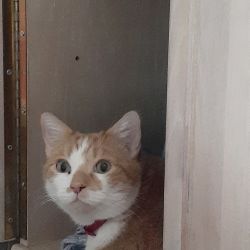Origins and Temperament
The Spanish Mastiff, a breed steeped in history, has been the guardian of Iberian flocks for centuries, deterring predators with its formidable presence. Renowned for their calm and gentle nature, they are nonetheless vigilant and protective of their family. Their stoic personality means they handle travel relatively well, but their large size and guardian instincts may necessitate acclimating them to new handlers and environments pre-travel.
Size and Physical Needs
Weighing in at a commanding 140-200 pounds, Spanish Mastiffs require ample space to ensure comfort during transport. Regular exercise is paramount for their physical well-being, so during transport, space for movement and stretch breaks is crucial. Due to their size, a climate-controlled environment is ideal to prevent overheating and ensure their joints are not stressed during the journey.
Common Health Considerations
With predispositions to hip dysplasia, gastric torsion, and heart conditions, traveling Spanish Mastiffs must have any health concerns addressed pre-travel. Documentation for vaccinations and a current health certificate should be prepared, assuring a smooth and risk-averse transportation process.
















